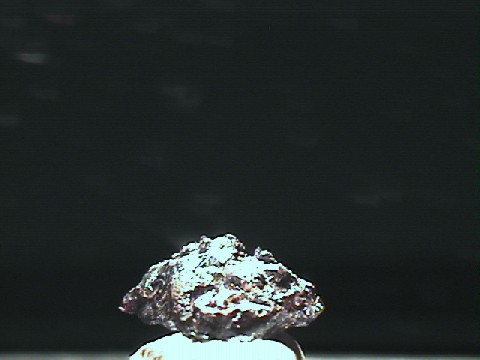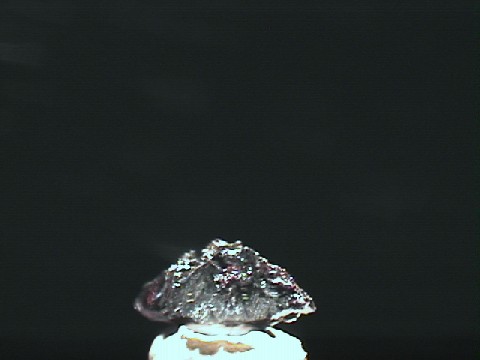 THE
MINERAL ARGYRODITE
THE
MINERAL ARGYRODITE
- Chemistry: Ag8GeS6,
Silver Germanium Sulfide.
- Class: Sulfides.
- Uses: As mineral specimens and as a very minor ore of silver.
- Specimens
Argyrodite is a rare silver germanium sulfide mineral.
It was first discovered in the silver mining area of Freiberg,
Saxony, Germany in the Himmelsfurst Mine.
When it was discovered, the element germanium was only theorized to exist by Mendeleev in 1871.
Fifteen years later, the element is discovered in samples of a new mineral species, argyrodite!
Germanium was named for Germany and is an important element in semiconductors, special optical glass and medicine.
Argyrodite is not an ore of germanium due to its rarity and the fact that sufficient germanium is recovered from the burning of coal and the refining of zinc ores in which it is found as a trace element.
There are only about 20 minerals that consistently contain germanium of which the more common are the sulfides argyrodite,
germanite and
renierite.
Argyrodite gets its name from the Greek words that loosely translate into
"rich in silver".
Argyrodite forms a series with the mineral
canfieldite;
Ag8SnS6.
Notice the difference in formula?
The germanium ion, Ge, in argyrodite has been replaced by a tin ion,
Sn, in canfieldite.
A series is where two or more minerals show substitution with one or more elements in their chemistries, but the structure is essentially the same.
Both these minerals have been classified as
sulfosalts, but this is not universally accepted.
PHYSICAL CHARACTERISTICS:
- Color is a steel gray to reddish gray; tarnishes to black.
- Luster is metallic.
- Transparency: Crystals are opaque.
- Crystal System: Orthorhombic (pseudo-isometric); m m 2.
- Crystal Habits include pyramidal (pseudo-octahedral) and pseudo-dodecahedral crystals and botryoidal crusts and massive forms.
- Cleavage: None.
- Fracture: Conchoidal.
- Hardness is 2.5
- Specific Gravity is 6.2 - 6.5 (heavier than average for metallic minerals)
- Streak is gray.
- Notable Occurrences are limited to the type locality of
Himmelsfurst Mine, Freiberg,
Saxony, Germany
as well as Oruro, Bolivia.
- Associated Minerals include
acanthite,
pyrite and other
sulfides.
- Best Field Indicators are crystal habit, locality, color, lack of cleavage and
density.
 THE
MINERAL ARGYRODITE
THE
MINERAL ARGYRODITE


